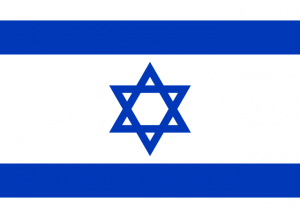Language/Hebrew/Grammar/Nikkud
 Հայերէն
Հայերէն Български език
Български език 官话
官话 官話
官話 Hrvatski jezik
Hrvatski jezik Český jazyk
Český jazyk Nederlands
Nederlands English
English Suomen kieli
Suomen kieli Français
Français Deutsch
Deutsch हिन्दी
हिन्दी Magyar
Magyar Bahasa Indonesia
Bahasa Indonesia فارسی
فارسی Italiano
Italiano 日本語
日本語 Қазақ тілі
Қазақ тілі 한국어
한국어 Lietuvių kalba
Lietuvių kalba Νέα Ελληνικά
Νέα Ελληνικά Şimali Azərbaycanlılar
Şimali Azərbaycanlılar Język polski
Język polski Português
Português Limba Română
Limba Română Русский язык
Русский язык Српски
Српски Español
Español العربية القياسية
العربية القياسية Svenska
Svenska Wikang Tagalog
Wikang Tagalog தமிழ்
தமிழ் ภาษาไทย
ภาษาไทย Türkçe
Türkçe Українська мова
Українська мова Urdu
Urdu Tiếng Việt
Tiếng ViệtI'm excited to teach you about Nikkud, the vowel pointing system used in Hebrew to indicate vowel sounds. As you learned in our previous lesson, Hebrew letters are mostly consonants. Nikkud provides the vowels that go with those consonants. Understanding Nikkud is essential for reading and writing in Hebrew.
What is Nikkud?
Hebrew is written without vowels, but vowels are still critical to the language. Nikkud is a system of dots and dashes that was developed in the early centuries CE to indicate vowels in written Hebrew. It's not used in every written document since it can add additional complexity to the text. It is added in certain religious texts to ensure that the pronunciation of sacred words is correct. There are five basic vowel sounds in Hebrew, and Nikkud helps readers understand which vowel is being used.
Types of Nikkud
There are five vowel sounds in the Hebrew language, but the Nikkud system includes additional markings that help you read and pronounce the words correctly:
- patach: A horizontal line under a letter, representing /a/.
- kamatz: A diagonal line under a letter, indicating /aː/.
- segol: Three dots together in a shape like an inverted triangle, representing /e/.
- tsere: Two horizontal dots, indicating /eː/.
- hireq: A dot beneath a letter that indicates /i/.
- shureq: A dot within a circle under a letter, indicating /u/.
- hataf patach: A dot above a consonant, representing a short /a/ sound.
- hataf segol: Two dots above a letter, indicating a short /e/.
- hataf kamatz: A dot within a letter, indicating a short /o/ sound.
It's important to note that without Nikkud, these vowels would not be pronounced at all.
Nikkud Practice
The best way to learn Nikkud is to practice reading words with Nikkud aloud. Here are some words that you can use for practice:
| Hebrew | Pronunciation | English |
|---|---|---|
| בָּיִת | ba-yit | house |
| חַיִּים | cha-yim | life |
| יָם | yam | sea |
| שֶׁמֶשׁ | shemesh | sun |
Once you get comfortable with the basic Nikkud, you can move on to reading more complex words and phrases.
Conclusion
Nikkud is an essential part of Hebrew, vital for pronunciation and reading. By taking the time to learn it, you will become more proficient in the Hebrew language. Don't worry if it takes a bit of practice to get used to. You've got this!
Sources


